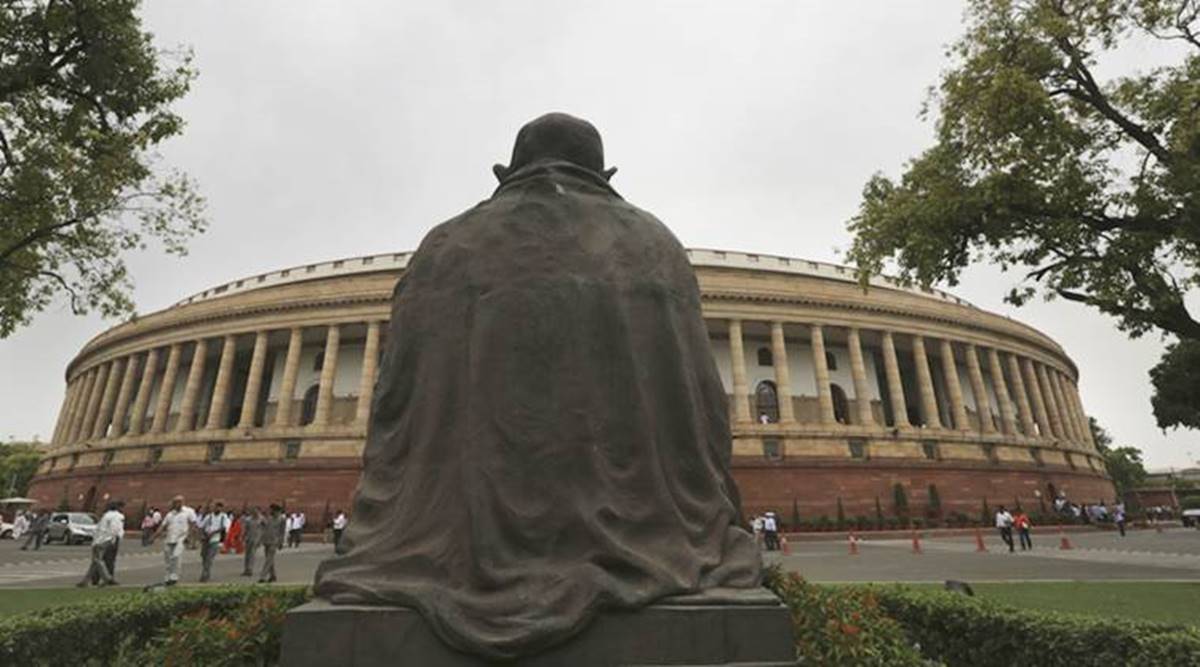 Although the final picture on procedural changes is yet to emerge, sources said the session could be held in two shifts — a 10 am to 2 pm shift for one House and a 4 pm to 8 pm shift for the other. (File)
Although the final picture on procedural changes is yet to emerge, sources said the session could be held in two shifts — a 10 am to 2 pm shift for one House and a 4 pm to 8 pm shift for the other. (File)Parliament’s monsoon session, delayed due to the Covid-19 pandemic, will begin on September 14, sources have said. While the visible changes in conducting it could be the highlight of the monsoon session, the ruling BJP is likely to face Opposition attack on a range of issues from the pandemic to the LAC standoff, the economic situation and unemployment.
Although the final picture on procedural changes is yet to emerge, sources said the session could be held in two shifts — a 10 am to 2 pm shift for one House and a 4 pm to 8 pm shift for the other. The government, it is learnt, has proposed that Question Hour could be dropped, considering the truncated working hours. But sources added that the presiding officers would take a decision only after discussion with Opposition parties.
After exploring a number of possibilities including virtual and hybrid meetings for the monsoon session, the presiding officers of both the Lok Sabha and Rajya Sabha decided to conduct a fully physical session. According to the current plan, while members of the Lower House could be seated in the chamber of Lok Sabha, its galleries, the chamber of Rajya Sabha and its galleries, the elders could sit in both the chambers for the meetings. Sanitation will be done between the shifts.
According to BJP sources, the ruling party is preparing to counter the Opposition’s possible attacks on the tension with China, the controversy over the PM CARES fund, issues of migrant labourers and unemployment and the economic situation apart from the government’s handling of the pandemic. Members are also expected to push discussion on the flood situation and the controversy over a Wall Street Journal report on Facebook.
However, lack of unity among the Opposition and the recent internal crisis in the Congress could weaken the Opposition’s attack on the government, BJP leaders said.
On the business side, the government will have to get the ordinances it issued since the last session in March replaced by laws. The government has issued around 11 ordinances, including Salaries and Allowances of Ministers (Amendment) Ordinance; Salaries, Allowances and Pensions of Members of Parliament (Amendment) Ordinance; Epidemic Diseases (Amendment) Ordinance; Essential Commodities (Amendment) Ordinance; Farmers Produce Trade And Commerce (Promotion And Facilitation) Ordinance, 2020; Farmers (Empowerment And Protection) Agreement On Price Assurance And Farm Services Ordinance; Banking Regulation (Amendment) Ordinance; Insolvency and Bankruptcy Code (Amendment) Ordinance; Homeopathy Central Council (Amendment) Ordinance; Indian Medicine Central Council (Amendment); and Taxation and Other Laws (Relaxation of Certain Provisions) Ordinance during this period.
Preparations have already begun in the Parliament building to ensure that pandemic protocols are followed. The Lok Sabha chamber — which has seating capacity for 545 members — will accommodate 168 MPs and every row will be separated by polycarbonate sheets to ensure distancing. The Rajya Sabha chamber is to accommodate 60 members. Others will be seated in visitors’ galleries of both Houses.
For members seated in galleries and other chambers, large screens will be placed at various places and microphones provided for each member at their seats. Each intervention and statement would be relayed in both chambers and galleries.